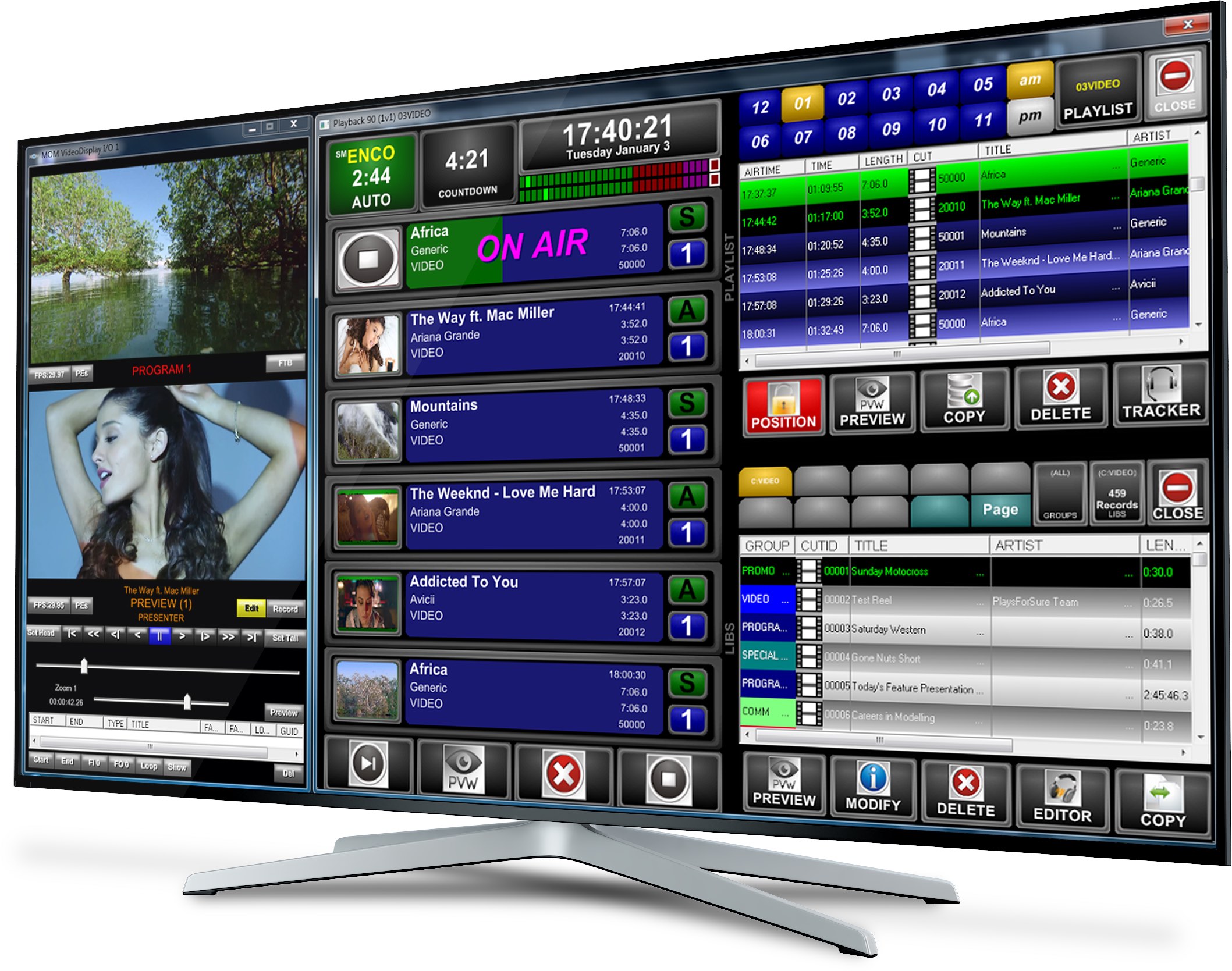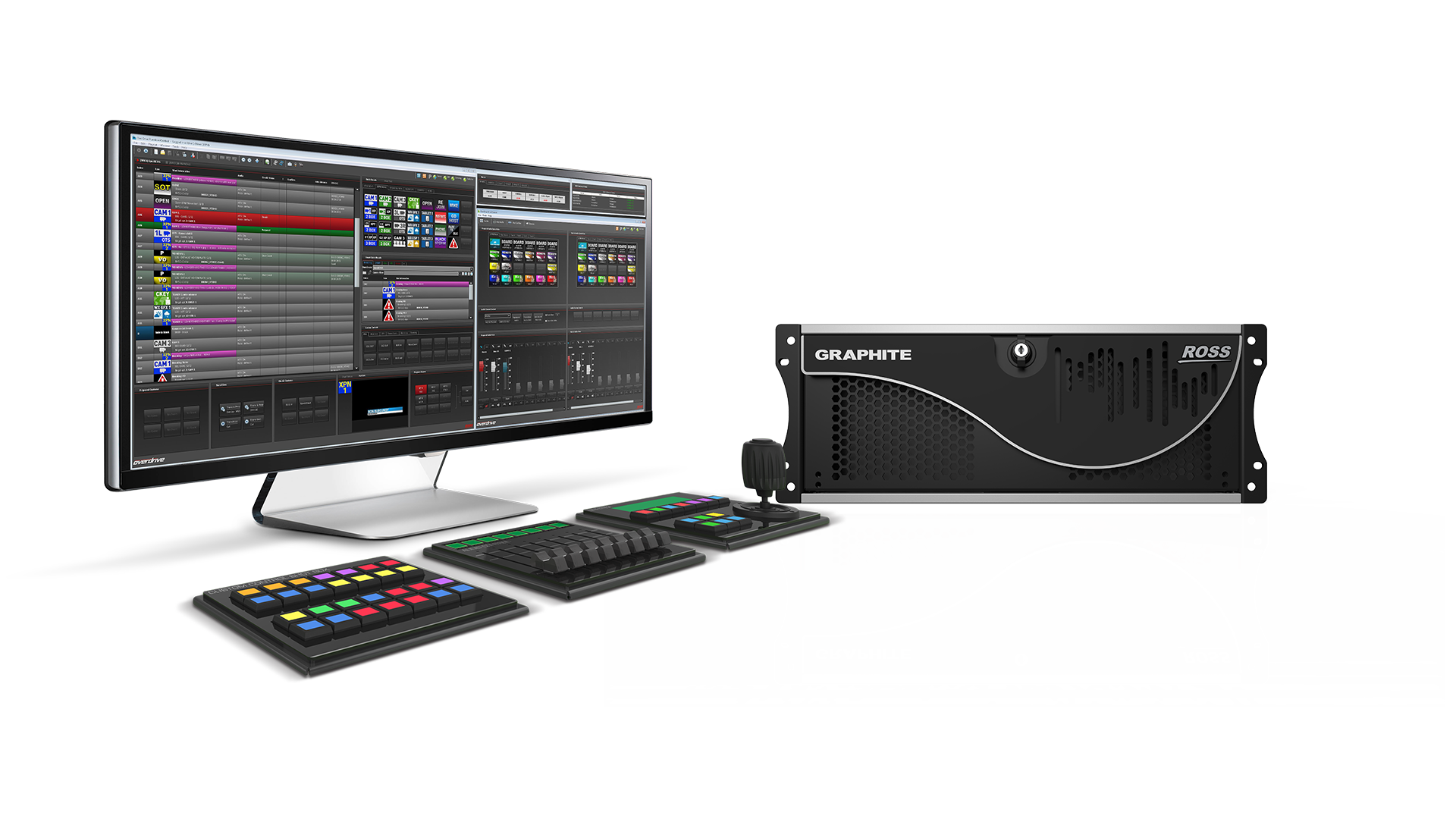Flexibility Driving Station Automation Trends
LAS VEGAS—Virtualized video playout streams operating in the cloud; the integration of many station automation systems into one easy-to-manage platform, and having the flexibility to spin new channels up and down as needed… these are just some of the trends influencing station automation products today, and that vendors will be addressing in their booths at the NAB Show.
CENTRAL CONTROL
Sam Peterson, vice president of production management at Bitcentral, said that along with virtualization, other trends driving station automation including centralization and simplification.
Although locating station automation facilities in centralized locations, creating them as “virtual” facilities in the cloud, and making all of them simple to operate may seem like very different trends, they all come from a common broadcaster need. “What is driving those trends is our customers’ requirement to run multiple outputs from more efficient operations centers,” Peterson said. “This is particularly true for customers who are running multiple linear channels.”
To address these trends, at the show, Bitcentral will showcase CentralControl, its master control/station automation platform that provides a suite of modular user interfaces and tools for ingest, media management, and playout. Bitcentral recently did a major CentralControl installation for a Latin American broadcaster, and will be sharing details of the technical solution at the NAB Show.
THE IP FACTOR
IP signal delivery, cloud, and integration of playout facilities are the automation trends ENCO Systems is focusing on right now, according to Ken Frommert, company president. “Video over IP is the big buzzword in the industry right now,” he said. “We’ve implemented that within our automation system to meet the growing demand.”
The professional video industry's #1 source for news, trends and product and tech information. Sign up below.

Dave Turner, executive vice president for ENCO added that video over IP “is a much easier transport mechanism” and that it “lends itself to implementing virtualized content management and playout in the cloud, which is a huge trend in broadcasting due to its lower cost of operation.”
[Read: The Benefits Of Virtualization]
With its integration of automatic ingest, media asset management, graphics, and playout automation together into one platform, ENCO Systems’ MOM (Media Operations Manager) automated playout system will be front and center at the company’s booth. “We’ll be showing how it integrates with different production systems made by Broadcast Pix, Grass Valley, NewTek, Ross Video, and Sony,” said Turner.
ON PREM AND IN-CLOUD PLAYOUT
Shawn Maynard, senior vice president/GM for Florical Systems sees two divergent trends in station automation.
On one hand, cloud-based station automation is catching on. “Whether on or off-premises, we’re seeing a lot of interest in virtualized playout systems operating in the cloud,” he said. On the other hand, “I’m seeing a resurgence of traditional playout centers using best-of-breed equipment. When it comes to individual local stations, rather than a network, they just don’t see the cloud as a viable playout option at this point.”
Florical System will focus on virtualized playout at their NAB Show booth. “Our main feature this year is our new FéniX integrated playout option—powered by Harmonic Technologies,” Maynard said. Florical Systems will also showcase its Acuitas channel-in-a-box IT-based playout package that can be deployed on COTS hardware. “For the first time, we’ll be showing Acuitas operating over SAN architecture,” he said.
MAKING MOBILE CONTENT DELIVERY AFFORDABLE
Grass Valley is seeing a growing emphasis on pushing broadcast content to mobile users, according to Chuck Garfield, the company’s director of product management for the News division. “Unfortunately, the ad dollars are not following this area of digital content growth,” he noted. “So the revenue that is generated of this is a small part of any station’s revenue stream; say just 25 percent of the total.”
In this context, station operators need to find economical ways to fund and operate second and third channels. “The budget isn’t there to fund standard linear control room equipment,” Garfield said. This is where virtualized and cloud-based station automation solutions need to step up.
Grass Valley has been tackling this issue through what it calls “automated production control.” At the NAB Show, the company will demonstrate “Event Builder,” the first stage of an APC application designed to reduce the complexity of live broadcast production by up to 50 percent.
“Event Builder is designed for a non-technical, lower-cost staff member to call up a basic Grass Valley Ignite library to produce live programming,” said Garfield. “This is part of our efforts to create lower cost station operations for broadcasters; of which station automation is just a part.”

With the recent acquisition of Snell Advanced Media, Garfield said Grass Valley is “excited” by the opportunities to blend the SAM line of production equipment into Ignite. “We will demonstrate Ignite control of the Kula video switcher, and already have plans in place to add Kahuna control to our APC portfolio,” he said.
NEW MEDIA WORKFLOWS
For Imagine Communications, their customers are concentrating on new media workflows, according to Chuck Kocsis, the company’s senior product manager for automation.
“We’re also helping our broadcast customers define their business cases for data center-based playout and cloud-based playout,” he said. Such changes help stations launch short-term pop-up channels for special occasions/opportunities at minimal cost, and facilitate disaster recovery.
At its booth, Imagine will feature the Versio Platform integrated playout solution, which supports data center-based and cloud-based content playout. The company will also show xG Schedule, which it says is the industry’s first cloud-based planning and scheduling system for linear, on-demand and digital platforms.
Read: The Opportunities For Virtualized Playout]
“One of the major questions we will be able to answer is how customers can transition from their current station operations—whether automated or not—to our streamlined Versio and xG Schedule platforms to become more efficient, flexible, and cost-effective in their operations,” Kocsis said. “We want to help broadcasters decide what they need to do to automate their stations, identify their comfort level in affecting change, and help them achieve it as painlessly as possible.”
BOTH ENDS OF THE SPECTRUM
Ross Video is seeing “a push this year for automation at both ends of the spectrum,” said Mike Paquin, marketing product manager for control and automation for the company.
“A decade ago, automation was all about making operational savings and improving the efficiency of existing productions,” he said. “Now, our customers are looking for ways to add content for new distribution channels cost-effectively at a time when video resolution quality is jumping up to 4K on TVs, computers and even smartphones.”
At the NAB Show, Paquin says Ross will demonstrate “end-to-end solutions for large national and network level productions—with all the production horsepower required—featuring our flagship Acuity production switcher, Inception social media management and OverDrive Premium.”

The company will also showcase OverDrive+Graphite, which combines automation and production tools that provide the same levels of production quality and consistency “as the larger offerings, but at a price and compact size that ideally meets the needs of smaller productions like seconds screen, breaking news, or smaller markets” Paquin said.
THE REPACK IMPACT
The ongoing channel repack that resulted from the recent spectrum auctions is prompting broadcasters to focus on reducing capital and operations expenditures, without sacrificing functionality, according to Rush Beesley, president of RUSHWORKS. These changes are leading broadcasters to re-evaluate their spending plans, he noted.
Adding to their confusion is OTT, which “presents an ever-rotating kaleidoscope of possibilities, and the attendant uncertainties of how to monetize alternative media delivery platforms,” Beesley said. “So spending less on products and minimizing human resources is key to economic survival in station automation.”
RUSHWORKS will address this uncertainty by showcasing its A-LIST BROADCAST Automation and Streaming System. “It supports up to four channels in a chassis, and provides all the functionality that traditional broadcasters need at a fraction of the cost of ‘big iron’ systems,” said Beesley. A-LIST interfaces with virtually all video routing switchers and third-party traffic and billing systems; provides detailed as-run logs for reconciliation, integrates with most current EAS systems, and can be run remotely from virtually any location, as long as there is Internet connectivity.”

RUSHWORKS will also unveil the A-LIST Streamster, a tiny desktop appliance that includes most of the features of the A-LIST BROADCAST configuration, according to Beesley. However, with the emphasis on IP/OTT mediacasting, there are no baseband inputs or outputs. The A-lIST Streamster has six USB 3.1 ports and Gigabit Ethernet.
EFFICIENCY IS KEY
Sony’s take on station automation is in line with the trends it sees driving the broadcast marketplace.
“Broadcasters are looking for more efficiency across the entire enterprise, as their operations become more consolidated and they look to move away from the traditional ‘heavy iron’ approach often associated with many on-premise solutions,” said Ali E. Amoli, director of product management & solutions development at Sony Professional Solutions Americas. “We’re seeing more interest in virtualized data centers and master control in the cloud, especially for disaster recovery. Customers have come to us and said this is a real need, especially in light of all the recent natural disasters and flooding that disrupted local stations’ broadcasting.”
At the 2017 NAB Show, Sony announced the acquisition of station automation developer Crispin Corp., a company it had been collaborating with on deployment of the “Public Media Management” platform at Boston PBS station WGBH. The fruits of this acquisition, and how it meets the demand for more efficient operations, will be seen at the 2018 show, when Sony Electronics exhibits its own station automation solution.
“Sony’s solution uses a combination of Crispin Loading Dock and RapidPlayX in the cloud, Sony wireless streaming camcorders, our Ci Cloud Platform and virtual switching technology,” said Amoli. “We can take streams directly from the cameras in the field, files directly from Ci, do graphics overlays and switching, automate play-out and exchange information with traffic systems. With Sony’s Master Control in the Cloud for DR, we can get a station’s programming on air and distributed when they are unable to operate locally.”
James Careless is an award-winning journalist who has written for TV Technology since the 1990s. He has covered HDTV from the days of the six competing HDTV formats that led to the 1993 Grand Alliance, and onwards through ATSC 3.0 and OTT. He also writes for Radio World, along with other publications in aerospace, defense, public safety, streaming media, plus the amusement park industry for something different.

